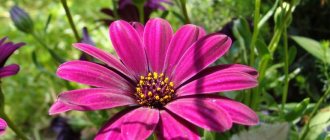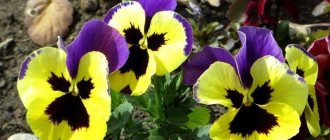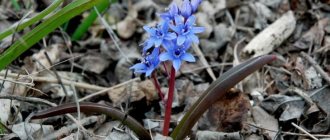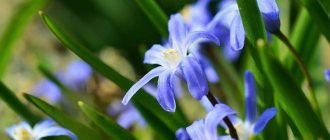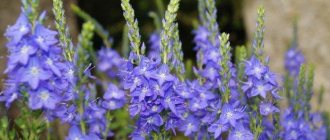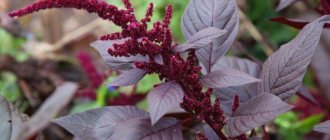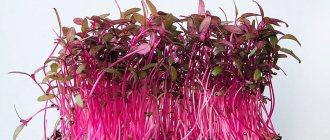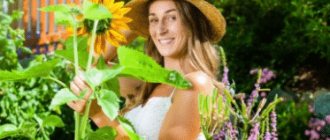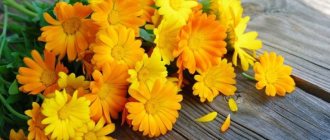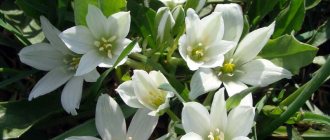The airy, delicate and very decorative Eschscholzia flower will be a wonderful decoration for a flower bed and flower garden. It looks no less beautiful in container compositions. This is one of the most charming plants we can grow in the garden. Its delicate, almost parchment-like, large petals delight with bright colors and illuminate every corner of the garden. Find out how eschscholzia is grown - planting and care in open ground, look at photos of varieties, learn how to propagate the plant from this article.
general characteristics
Eschscholzia is a very delicate and graceful flower. It not only looks like a poppy, but is actually a distant relative of it. This is a small branched bush with beautiful openwork leaves and shiny flowers.
Each eschsolzia flower lives only a few days, and only in sunny weather. But there are so many of them that even this is enough. On average, flowering lasts a very long time - from early summer to mid-autumn.
Not only flowers, but also leaves have excellent decorative qualities. They are covered with a bluish coating and slightly resemble wormwood. Dense thickets of Eschscholzia are spectacular even without companion flowers.
According to legend, the golden flowers of Eschscholzia have deceived gold miners for years. The plant has thin but very numerous shoots, and also has a delicate but long tap root. The sensitive buds close on cloudy, cold, windy and rainy days.
Photo: zen.yandex.ru
Description of the plant
Eschscholzia is a herbaceous perennial that has a taproot system. The plant can reach a height of forty centimeters. Despite the fact that eschscholzia is considered a perennial, it is grown in culture as an annual plant.
California poppy has many thin shoots. The leaves are located on long petioles, have a bluish-green color, and are dissected. The flowers are cup-shaped, solitary, and can reach eight centimeters in diameter. The flowers strongly resemble poppies and can be double or simple. The color palette is varied: red, orange, yellow, white and many shades of these colors. These flowers have a certain peculiarity - in windy and cold weather they do not open, even if it is warm outside, but the sky is overcast, the eschscholzia will not open its flowers. The plant also has a fruit - this is a seed capsule, the diameter of which ranges from three to nine centimeters.
Types of Eschsolzia
There are several dozen varieties of Eschscholzia, but several of them are cultivated in our latitudes!
Californian Eschscholzia
The most popular species in our latitudes, and it is this plant that is called California poppy. The varieties are taller and can grow up to 40 cm. The shoots are thin, but ribbed, and the flowers are single and cup-shaped, up to 9 cm.
Photo: 2sotki.ru
Soddy Eschscholzia
A miniature herbaceous variety rarely grows above 15 cm. The leaves are collected in graceful rosettes with numerous peduncles and yellow flowers up to 3 cm.
Photo: pixabay.com
apple blossom
One of the most popular varieties that attracts attention with large double flowers. It can also be recognized by its characteristic color, because the edges of the rich pink petals gradually lighten closer to the middle.
Photo: cvetokras.ru
Eschscholzia Mikado
Breeders bred this variety for lovers of delicate simple flowers. At the same time, they are quite large, up to 7 cm, and stand out with a bright orange center.
Photo: wallpaperscraft.ru
Fruity explosion
Another popular variety of Californian Eschscholzia, and again the unusual structure of folded petals. There are many pink and crimson flowers.
Photo: o-flora.com
Eschsolzia Ballerina
A variety with giant bright flowers. The diameter of the opened bud can reach 15 cm, which is not entirely typical for Eschscholzia. How can one resist such beauty?
Photo: kryuckom.ru
Ranunculus flowers (50 photos): types, planting and care
Collecting seeds
If the self-sowing option does not suit you, then you need to collect California poppy seeds yourself. This is not difficult to do. However, some are wondering how to collect eschscholzia seeds. It is necessary to put gauze bags on large wilted flowers. This is necessary so that the seeds do not fall out of the box into the ground. They can be removed immediately after ripening. And full ripening occurs exactly a month after the flower withers. After collecting the seeds, they must be laid out on paper and dried. Seeds are stored in paper bags. After wrapping the planting material, you should store it on the bottom shelf of the refrigerator. If all collection and storage rules were followed correctly, the planting material will retain its viability for three years.
Eschscholzia care
There are only two main subtleties of caring for Eschscholzia - do not overuse watering and immediately choose a permanent place for planting. In addition, keep in mind that the plant grows very densely, so weeding the flowerbed will be problematic.
Temperature
Eschscholzia does not like frost, which is why it is planted as an annual in colder regions. But with proper care, it will tolerate short-term frosts down to -5 degrees. But high temperatures do not frighten her at all.
Photo: landscapeportal.ru
Lighting
Eschscholzia loves bright sunlight, so you can safely choose the most illuminated areas. She is not afraid even of direct sunlight in the hot summer.
Photo: vosadu-li-vogorode.ru
Watering
Too intense watering is the main cause of all Eschscholzia diseases. It needs to be watered more or less intensively only when the drought is completely prolonged and the soil is completely dry. Even in the hottest summer, you cannot flood the planting every day. Also choose for the procedure in the evening, when the buds have already closed.
Photo: 7dach.ru
The soil
Eschscholzia does not tolerate acidic soils and close groundwater. Before planting, be sure to loosen the area and then lightly mulch the small, light seeds. The plant thrives in dry, infertile soil, where other garden flowers do not take root.
Photo: liveinternet.ru
Fertilizers and fertilizing
Eschscholzia does not require additional care at all. Moreover, this can even harm her. Reduce planting fertilizers to a minimum, and in fertile soil it is better to do without fertilizing at all.
Photo: zen.yandex.ru
Trimming
Eschscholzia is a perennial and should be pruned closer to winter. Feel free to cut off the entire above-ground part of the plant to make it even more beautiful in the spring. And during flowering, it is important to promptly remove damaged stems, wilted buds and old faded shoots. This is necessary for Eschscholzia to grow further.
Photo: zen.yandex.ua
Heuchera (50 photos): types, planting and proper care
Growing seedlings
With the seedling propagation method, an important condition is to prevent injury to the root system during transplantation of seedlings into open ground. This must be taken into account already at the stage of sowing seeds. Therefore, it is advisable to use peat tablets, collapsible or disposable cups in order to plant the plant along with the soil in the future. Otherwise, there is a high probability of seedling death.
Otherwise, growing eschscholzia in seedlings is no different from growing other plants. To do this you need:
- Disinfect the seeds with a solution of potassium permanganate or fungicides, and also treat them with growth stimulants to improve germination.
- Place peat tablets in a large plastic container and pour water into it.
- After the tablets have absorbed all the water and swelled, the remaining water should be drained.
- Using a damp toothpick, place one or two eschscholzia seeds into each peat tablet.
- Sprinkle with a millimeter layer of sifted peat.
- Moisten the top soil using a spray bottle.
- Cover the container with cling film or glass and place in a warm, bright place, hidden from direct sunlight.
Before the first shoots appear, the container must be ventilated and moistened in time, preventing the soil from drying out. Within two weeks the seeds will germinate. And after another 20 days, you can apply complex fertilizer in a weak concentration to feed the sprouts.
2–3 weeks before planting seedlings in an open area, you need to carry out a hardening procedure. First, you can leave the seedlings under an open window for a few minutes. In the future, it should be taken out to the balcony, gradually increasing the time spent in the fresh air from 30 minutes to 4 hours.
Planting and propagation of eschsolzia
Due to the long but fragile root system, which actively grows deeper, Eschscholzia is not planted as seedlings. For propagation, seeds are used, which can be sown in early spring or mid-autumn. Most often, autumn sowing provides more abundant flowering, but then we recommend covering the seeds with a thick layer of leaves for the winter.
In the future, Eschscholzia reproduces well by self-sowing for at least the next few years. So if the shape of the decorative composition is important to you, you will have to thin it out regularly. By the way, the plant is also thinned out when planting so that the seedlings grow at a distance of about 20 cm.
Photo: vosadu-li-vogorode.ru
Rules for sowing in open ground
You can sow seeds in open ground both in autumn and spring. Autumn sowing is more preferable, since the conditions for seed growth are as close as possible to natural ones.
Advantages of October sowing:
- Natural stratification.
- Friendly emergence of seedlings.
- Early flowering.
- Easy process of planting and caring for plants.
Spring sowing is carried out in April and after 10–15 days the first shoots appear. But unlike the autumn method, this method delays the appearance of buds for a whole month.
Regardless of the method of planting seeds, it is important to carry out preparatory manipulations:
- Preparing the site. For good health and abundant flowering of eschscholzia, you need to choose a sunny area where moisture does not stagnate.
- Soil preparation. An important condition is the weak acidity of the soil, as well as high conductivity of moisture and air. The land must be fertile and preferably sandy. You can do this yourself - into the soil on which the flower will grow, you need to add sand at the rate of 3-5 kg per m² and peat - 2-3 kg per m². The soil needs to be dug well to a depth of 20 cm and leveled a week before planting.
The process of planting seeds in open soil:
- In dry or slightly moist soil, you need to make furrows up to 8 cm deep.
- Mix the seeds with sand to prevent dense emergence of seedlings, and sow along the entire length of the furrow.
- Level the grooves and cover with dry leaves, sawdust or peat.
- After germination, the seedlings must be thinned out so that there is a gap of at least 20 cm between them.
Pest and disease control
Eschscholzia is very fond of aphids, which often attack tender foliage in the summer. If dry days last for a long time, this contributes to the appearance of spider mites. In both cases, you need to treat the plants with insecticides as quickly as possible.
As for diseases, most often these are fungi and rot. And they develop due to improper watering. Eschscholzia is accustomed to life in dry regions, so it easily tolerates drought, but very poorly with constant floods. If suspicious symptoms appear, reduce watering as much as possible and use fungicides.
Photo: 2sotki.ru
Verbena (85 photos): types, proper care
Medicinal properties
Thanks to the flavonoids and carotenoids contained in eschscholzia, it is used for the preparation of medicines .
Indications for use
The Indians used California poppy juice for severe toothaches.
Preparations based on eschsolzia help in the fight against head lice and have a sedative and analgesic effect .
Eschsolzia – photo
The delicate petals of Eschscholzia resemble butterfly wings that tremble in the wind. Just look how beautiful it is!
Photo: eldomo.ru Photo: moyadacha.temaretik.com
Photo: artfile.ru
Photo: 2sotki.ru
Photo: fotoload.ru
Photo: fotoload.ru
Photo: na-dache.pro
Photo: blog-o-cvetax.blogspot.com
Photo: ogorodniki.com
Photo: happymodern.ru
Photo: goodfon.ru
Photo: 2sotki.ru
Photo: pxhere.com
Photo: pxhere.com
Photo: wallup.net
Photo: zen.yandex.by
Photo: zen.yandex.ru Photo: vosadu-li-vogorode.ru
Photo: na-dache.pro
Photo: topogorod.ru
Photo: stroyday.ru
Photo: ogorodniki.com
Photo: na-dache.pro
Did you like the post? Subscribe to our channel in Yandex.Zen, it really helps us in our development!
Popular varieties
Lobelia planting and care in the garden
Decorative hybrid varieties of Eschscholzia are in great demand. They differ in the shades of flowers and their shape.
Note! When choosing a plant, resistance to various diseases that affect ornamental representatives of the flora is of great importance.
apple blossom
This eschscholzia has double flowers that grow up to 6 cm in diameter. They are characterized by a delicate silver-pink color. Under comfortable conditions, flowering begins in June and ends with the arrival of cold weather.
Chiffon
Chiffon pleases with a variety of shades. All flowers are different from each other, they can be pink, white, red, yellow, orange. Even one bud combines several colors. The petals have an unusual texture, their edges resemble corrugated paper.
Ballerina mix
Only double flowers grow from a mixture of seeds. They are small, about 6-8 cm in diameter. The leaf blades are covered with a waxy coating. The flowers are rich yellow, bright orange or soft pink.
Mikado
Mikado is a plant variety with simple, monochromatic flowers. They are red-orange with a yellowish spot in the center.
Peach Sorbet
This Eschscholzia has a soft cream color. All flowers are single-color, densely double.
Strawberry Fields
Representatives of the variety resemble poppies more than other Eschsolzia. The petals are bright red, turning yellow in the center.
Variety Strawberry Glade
